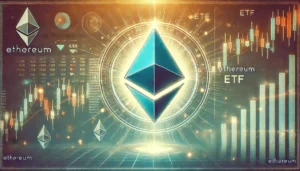The Merge could negatively impact DeFi and stablecoin sector
3 min read
As the ETH (ETH) Merge upgrade approaches, concerns grow around cryptocurrency projects that run or rely on the ETH network.
According to analytics platform Dapp Radar, the upgrade that will turn ETH into a Proof of Stake (PoS) network could negatively affect both the decentralized finance (DeFi) industry and stablecoins.
The Merge, stablecoins and DeFi
That’s because ETH is the predominant blockchain on which DeFi protocols and applications work. And stablecoins, which have a huge market cap, are crucial to DeFi. After all, they are often used in DeFi agreements to facilitate negotiation or as collateral for loans.
For example, stablecoins are generally used in “automated market maker” or “AMM” arrangements, the purpose of which is to create liquidity for others looking to transact business. In addition, stablecoins are “locked in” in DeFi agreements to earn income from interest payments.
“ETH is currently the predominant blockchain on which DeFi protocols and applications work. This is why ‘The Merge’ is one of the most anticipated events in the history of blockchain and is raising many questions about the stability of stablecoins once the transition is complete,” Dapp Radar highlighted in its recent report.
Furthermore, according to Pedro Herrera, data analyst at Dapp Radar, the negative effect of The Merge on the Ether market supply could affect DeFi liquidity pools.
“If The Merge does not occur successfully, we will have delays in DeFi protocols that will affect stablecoins,” he told CoinDesk. “But from a supply dynamics perspective, this could also affect how stablecoins are used for liquidity pools, in the DeFi space and beyond.”
The Merge, Tether and Circle
As reported by the platform, The Merge will switch the ETH blockchain from a Proof of Work (PoW) consensus mechanism to PoS, which uses 99.9% less energy.
As a result, transactions will take place on the new network and new ETH tokens will be minted by nodes on the network. The process of validating transactions and protecting the network will take place through the deposit of ETH in a pool.
On August 9, as Cryptheory reported, Circle, issuer of stablecoin USD Coin (USDC), pledged to support The Merge. Furthermore, the company behind the $45 billion market cap stablecoin has assured that it will not support forks.
Then Tether, issuer of USDT – the largest stablecoin by market cap – confirmed its support for The Merge. According to Tether, “a smooth transition is essential for the long-term health of the ecosystem and its platforms,” including those using its tokens.
It is worth noting that if Tether or Circle supported a hard fork of ETH, it could cause migration to this “new” PoW network, emptying the PoS network.
According to ETH co-founder Vitalik Buterin, the power of large stablecoins could cause problems in future blockchain hard forks. After all, Tether and Circle could choose to use the PoW blockchain to meet their own needs. But that won’t be the case, at least not for Tether and Circle.
The Merge, MakerDAO and Grayscale
However, MakerDAO, issuer of stablecoin DAI, is expressing concern about The Merge. That’s because, according to the organization, the update could do more harm than good. MakerDAO mentioned, for example, that the launch could trigger selling pressure on existing PoW chains.
Another risk, according to MakerDAO, has to do with the possibility of assets becoming worthless on staked ETH (sETH). There is also, according to the organization, the possibility of network downtime. After all, not all ETH-based protocols would move to PoS.
Also concerned about The Merge is digital asset manager Grayscale. The company’s concern is that The Merge could create a scenario where stablecoins and tokens locked in smart contracts may not be redeemable.
At the same time, the asset manager believes that token and stablecoin holders may panic and start liquidating their holdings, creating huge selling pressure.
Despite this, Dapp Radar analysts believe the developers took this into account:
“While Grayscale and MakerDAO’s concerns are genuine, ETH developers have likely taken them into account. The Merge will presumably transfer the ETH PoW data and serve as a transfer. A parallel chain would inevitably result in duplication. However, the strategy and measures to address these concerns remain,” they concluded.
More than 50% of all trades on cryptocurrency exchanges are fake






